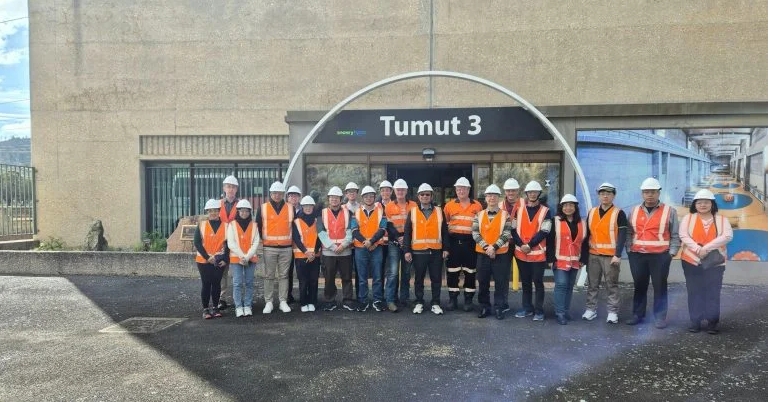
Adelegation from Sarawak’s Ministry of Utility and Telecommunication (MUT) and Sarawak Energy visited the Snowy Hydro Tumut 3 facility in New South Wales, Australia, as part of a study mission to explore renewable energy options, specifically pumped storage hydropower. The visit is part of Sarawak’s plan to expand its renewable energy capacity and meet its goal of generating 10 gigawatts of energy by 2030.
The delegation, led by Minister Dato Sri Haji Julaihi Narawi, aims to assess the feasibility of implementing pumped storage in Sarawak.
The Snowy Hydro Tumut 3 Power Station is a key part of the Snowy Mountains Hydroelectric Scheme, which consists of eight power stations with a total generating capacity of 4100MW. Tumut 3 is Australia’s first major pumped storage plant, recycling water between the Talbingo Reservoir and Jounama Pondage. During the visit, the delegation received briefings on the facility’s operations and toured the Talbingo Dam.
Key members of the Sarawak delegation included Syed Mohamad Fauzi Shahab, Deputy Permanent Secretary and Director of Electricity Supply for MUT; Ir. James Ung, Group Chief Operating Officer of Sarawak Energy; Ir. Bunyak Lunyong, CEO of SEB Power; and Nick James Arnett Wright, Senior Vice President for Business Development at Sarawak Energy.
The visit was facilitated by the Australian Department of Foreign Affairs and Trade (DFAT) through its Partnerships for Infrastructure (P4I) initiative. It provided insights into Australia’s energy transition and development of PHES technology. The study mission began with meetings in Canberra, where the delegation discussed technical, market, and regulatory aspects of pumped storage hydropower with representatives from DFAT, P4I, and the Australian National University.
Sarawak’s ongoing studies on Cascading Power Sources (CPS) and pumped storage hydropower involve visits to regions where these technologies have been successfully implemented, such as Australia and Austria. The MUT and Sarawak Energy are also focused on community engagement as part of their feasibility studies for renewable energy projects.